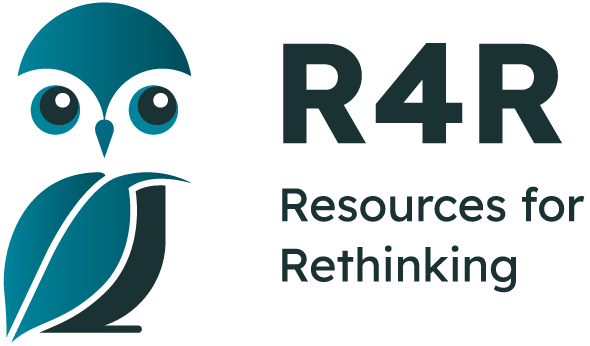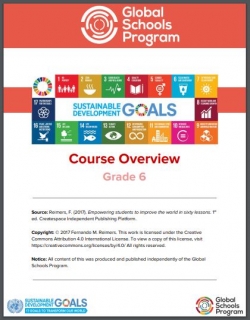- Home
- Tutorial
- Resource Guides
- Focus Areas
- LSF Programs
-
Professional
Development - Review Process
-
A project of LSF

Search for Resources
Description
In this grade 6, five part lesson, students will adopt a critical lens towards concepts of community and the value of diversity within a community. They will begin to explore how privilege, inequality, power dynamics, and social justice play into their own lives. The focus of each lesson is:
Lesson 1: Personal Identity, Privilege, and Inequality
- Students will participate in a game that simulates how an individual's position may impact their opportunities and success in life.
- Students will then dig into their own identity by creating an "identity wheel" and making connections to how the components of their identity may impact their privilege and place in society.
Lesson 2: My Place in the Community
- In this lesson, students will extend their understanding of privilege and identity covered in lesson 1 to the community level
- They will go through a thought experiment on the influence of inequality within communities.
Lesson 3: My Place in the Nation
- In this lesson, students will discuss inequality in a national context. This will be accomplished through a "choose your own adventure" style creative writing/performance exercise.
Lesson 4: My Place in the World
- In this lesson, students will be exposed to the global inequalities in order to increase their awareness and sensitivity of their role as global citizens. Students will do this through a United Nations simulation of problem-solving.
Lesson 5: Making Changes in My Daily Life
- In this lesson, students will bring their focus back to the local level, picking an issue they want to support within their community. They will then develop a list of five things they can do to address this issue in their everyday lives.
General Assessment
What skills does this resource explicitly teach?
Students will learn to create an identity wheel. They will also learn to create a poster.
Strengths
- Every lesson is equipped with a good description of each activity and time frames.
- An action activity is included in lesson 5.
- Every lesson is equipped with additional resources for the teacher and students.
- The additional resources are direct-linked.
- While the lesson is designed to be taught in its entirety, teachers could choose to only do one activity from the resource.
Weaknesses
- Accommodations for struggling learners are not included in this resource.
- Profiles needed to do the activities are not provided and must be created by teachers
Recommendation of how and where to use it
This resource is an excellent way to introduce the concepts of diversity, identity, privilege, and inequalities in Social Studies, Geography, and Civics classes.
Relevant Curriculum Units
The following tool will allow you to explore the relevant curriculum matches for this resource. To start, select a province listed below.
- Step 1Select a province
- British Columbia
- Step 2Select a grade level
- Grade 6
- Step 3Select a subject
- Social Studies
- Step 4Relevant matches
- Global Issues and Governance: Complex global problems require international cooperation to make difficult choices for the future.
- Manitoba
- Step 2Select a grade level
- Grade 7
- Step 3Select a subject
- Social Studies
- Step 4Relevant matches
- People & Places in the World: Global Quality of Life
- New Brunswick
- Step 2Select a grade level
- Grade 7
- Step 3Select a subject
- Social Studies
- Step 4Relevant matches
- Cultures
- Empowerment: Economics
- Atlantic Canada and the World
- Newfoundland & Labrador
- Step 2Select a grade level
- Grade 5
- Step 3Select a subject
- Social Studies
- Step 4Relevant matches
- Societies: Continuity and Change
- Socities: Social Structure
- Grade 6
- Step 3Select a subject
- Social Studies
- Step 4Relevant matches
- An Introduction to Culture
- Some Elements of Culture
- World Issues
- Grade 7
- Step 3Select a subject
- Social Studies
- Step 4Relevant matches
- Introduction to Empowerment
- Northwest Territories
- Step 2Select a grade level
- Grade 6
- Step 3Select a subject
- Social Studies
- Step 4Relevant matches
- Global Issues and Governance: Complex global problems require international cooperation to make difficult choices for the future.
- Nova Scotia
- Step 2Select a grade level
- Grade 6
- Step 3Select a subject
- Social Studies
- Step 4Relevant matches
- Social Studies 6: An Introduction to Culture
- Social Studies 6: World Issues
- Grade 8
- Step 3Select a subject
- Social Studies
- Step 4Relevant matches
- Social Studies 8 - A Changing Canadian Society: Advocacy and Action
- Social Studies 8 - A Changing Canadian Society: Equity and Inequity
- Ontario
- Step 2Select a grade level
- Grade 6
- Step 3Select a subject
- Social Studies
- Step 4Relevant matches
- People and Environments: Canada's Interactions With The Global Communty
- Grade 8
- Step 3Select a subject
- Geography
- Step 4Relevant matches
- Global Inequalities: Economic Development and Quality of Life
- Prince Edward Island
- Step 2Select a grade level
- Grade 6
- Step 3Select a subject
- Social Studies
- Step 4Relevant matches
- An Introduction to Culture
- Some Elements of Culture
- World Issues
- Saskatchewan
- Step 2Select a grade level
- Grade 6
- Step 3Select a subject
- Social Studies
- Step 4Relevant matches
- Social Studies 6: Canada & Our Atlantic Neighbours -Interactons and Interdependance of Nations
- Social Studies 6: Canada & Our Atlantic Neighbours -Power and Authority
- Grade 8
- Step 3Select a subject
- Social Studies
- Step 4Relevant matches
- The Individual in Canadian Society: Interaction & Interdependence of Nations
- Yukon Territory
- Step 2Select a grade level
- Grade 6
- Step 3Select a subject
- Social Studies
- Step 4Relevant matches
- Global Issues and Governance: Complex global problems require international cooperation to make difficult choices for the future.
- Grade 7
- Step 3Select a subject
- Social Studies
- Step 4Relevant matches
- The Ancient World to the 7th Century: Economic specialization and trade networks can lead to conflict and cooperation between societies.
Themes Addressed
Citizenship (1)
- Community-Building and Participation
Human Rights (4)
- Cultural Diversity
- Gender Equality
- Poverty
- Social Justice
Sustainability Education Principles
| Principle | Rating | Explanation |
|---|---|---|
| Consideration of Alternative Perspectives | Very Good | The multiple simulation activities in this resource exposes students to different views on the topic of identity, privilege, and social justice. From these simulations and through many open discussions, students get to form an opinion and take informed positions. |
Consideration of Alternative Perspectives:
| ||
| Multiple Dimensions of Problems & Solutions | Satisfactory | This resource shows how all three dimensions come into play when talking about diversity, identity, privilege, and how we take place in our community, our nation, and in the world. |
| Multiple Dimensions of Problems & Solutions: Effectively addresses the environmental, economic and social dimensions of the issue(s) being explored.
| ||
| Respects Complexity | Satisfactory | |
| Respects Complexity: The complexity of the problems/issues being discussed is respected. | ||
| Acting on Learning | Good | In lesson 5, students have the chance to pick an issue that they want to support within their community. They will then develop five things they can do to address this issue in their everyday lives and make posters of these steps to post around the school. Even though students are not held accountable to putting in place their action project, they are working to make positive change in their lives. |
| Acting on Learning: Learning moves from understanding issues to working towards positive change — in personal lifestyle, in school, in the community, or for the planet
| ||
| Values Education | Very Good | Open-discussion of students beliefs and values are at the core of this resource. |
| Values Education: Students are explicitly provided with opportunities to identify, clarify and express their own beliefs/values. | ||
| Empathy & Respect for Humans | Very Good | The focus of this resource is for students to explore their own privilege and that of others, and understand how others' identities, privilege and experiences differ from their own, and to take steps to address inequality in their own lives. While doing this, they will gain empathy and respect for diverse groups of humans. |
| Empathy & Respect for Humans: Empathy and respect are fostered for diverse groups of humans (including different genders, ethnic groups, sexual preferences, etc.). | ||
| Personal Affinity with Earth | Poor/Not considered | This is not a focus of this resource. |
| Personal Affinity with Earth: Encourages a personal affinity with -the natural world.
| ||
| Locally-Focused Learning | Good | Students will participate in a simulation with fictitious roles. However, they will have to look at their own community and its issues. They will also come up with some steps to help the issues in their community. |
| Locally-Focused Learning: Includes learning experiences that take advantage of issues/elements within the local community.
| ||
| Past, Present & Future | Very Good | |
| Past, Present & Future: Promotes an understanding of the past, a sense of the present, and a positive vision for the future. | ||
Pedagogical Approaches
| Principle | Rating | Explanation |
|---|---|---|
| Open-Ended Instruction | Very Good | There is a focus on open discussion with students in this resource. There is no "right answer" in these activities. |
| Open-Ended Instruction
: Lessons are structured so that multiple/complex answers are possible; students are not steered toward one 'right' answer. | ||
| Integrated Learning | Good | This resource can be used in Geography, Social Studies, and Civics classes. |
| Integrated Learning: Learning brings together content and skills from more than one subject area
| ||
| Inquiry Learning | Satisfactory | Students have many problems to try and solve in this resource. They are given the questions, but not the answers. |
| Inquiry Learning: Learning is directed by questions, problems, or challenges that students work to address.
| ||
| Differentiated Instruction | Very Good | The wide diversity of the learning activities in this resource addresses a range of student learning styles. However, no accommodations are included for struggling learners. |
| Differentiated Instruction: Activities address a range of student learning styles, abilities and readiness.
| ||
| Experiential Learning | Satisfactory | This resource promotes learning through multiple simulations on privilege, diversity, identity, and differences. |
| Experiential Learning: Authentic learning experiences are provided
| ||
| Cooperative Learning | Satisfactory | Students will work in groups to complete the activities. |
| Cooperative Learning: Group and cooperative learning strategies are a priority.
| ||
| Assessment & Evaluation | Good | Assessment opportunities are available for teachers in each lesson. However, no rubrics or checklists are included. |
| Assessment & Evaluation: Tools are provided that help students and teachers to capture formative and summative information about students' learning and performance. These tools may include reflection questions, checklists, rubrics, etc. | ||
| Peer Teaching | Good | Students will create posters in lesson 5 to promote the steps to decrease inequalities in their community. They will then post these in their school to encourage others to follow suit. |
| Peer Teaching: Provides opportunities for students to actively present their knowledge and skills to peers and/or act as teachers and mentors.
| ||
| Case Studies | Good | |
| Case Studies: Relevant case studies are included. Case studies are thorough descriptions of real events from real situations that students use to explore concepts in an authentic context. | ||
| Locus of Control | Good | |
| Locus of Control: Meaningful opportunities are provided for students to choose elements of program content, the medium in which they wish to work, and/or to go deeper into a chosen issue. | ||

